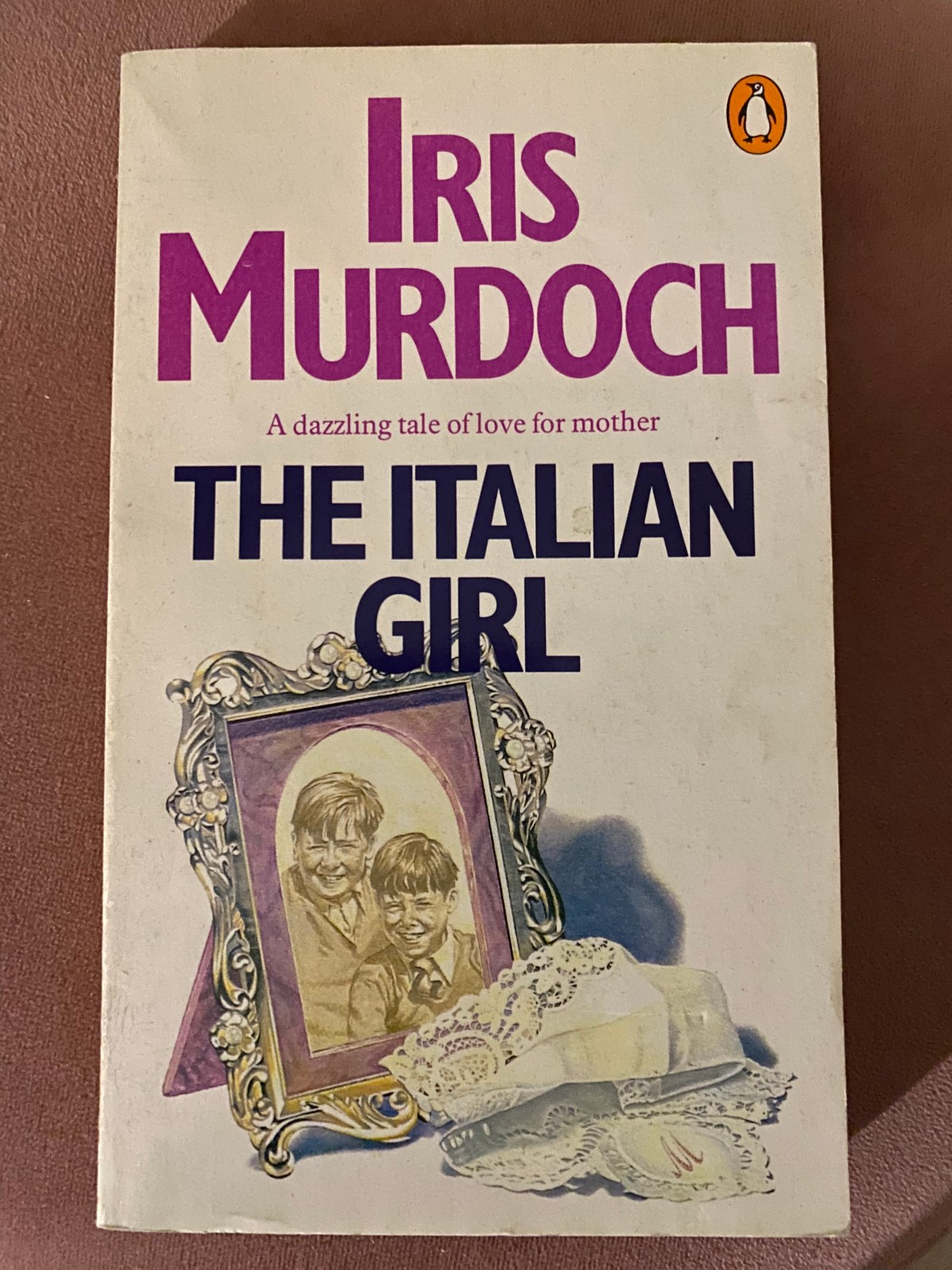I chose this for my 2023 reading challenge that is not a challenge (I am not setting myself targets, just picking a neglected title off one of my book shelves). This is another book I appear to have bought in 1990, the year that I graduated from university. A fairly short little book that has been hanging around for 33 years! I am ashamed to say that I don’t think I have read anything at all by Iris Murdoch. I am sure she is one of those authors you think you know, or whose work you think you are familiar with until you try and remember which books of theirs you have read.
Murdoch is considered one of the finest writers of the post-war generation. She was born in Ireland in 1919 to protestant British-Irish parents but moved to London when she was a baby. She attended both Oxford and Cambridge universities and was a philosopher as well as a writer of fiction and poetry. Her first novel, Under the Net, was published in 1953, and her nineteenth, The Sea, the Sea, won the Booker Prize in 1978. She died in 1999, two years after being diagnosed with Alzheimer’s disease. Her husband of more than forty years, John Bayley, cared for her and wrote a book about their life together, Iris: A Memoir of Iris Murdoch, which was made into a film in 2001 starring Jim Broadbent and Judi Dench.
I’m afraid I cannot say that I much enjoyed The Italian Girl; reading a little more about Murdoch’s philosophy and about her writing in the style of novelists who explore their characters’ inner worlds and show them on a journey of transformation and redemption, I can ‘appreciate’ the work, much as a student of English literature might, but it was not an especially engaging experience. Perhaps I should have read it back in 1990 when I was fresh out of university! Perhaps I bought it because it was recommended to me by a lecturer, or something.
So what is wrong with The Italian Girl for the 21st century reader? Well, the most difficult thing was the sense of datedness. The writing style is not actually showing its age too badly, so it is easy to forget that it is of a similar vintage to The Bell Jar, which I reviewed on here a couple of weeks ago. When one considers the events of the novel, it also feels remarkably modern: various extra-marital affairs, homosexuality, teenage pregnancy, and a rather bohemian setting. Perhaps that is why the staid conservatism seen particularly in the central character Edmund jars so much.
There is little in the way of a plot. Middle-aged Edmund returns to his mother Lydia’s home after her death, having been somewhat estranged from his family for some years. There he finds his brother Otto much declined – overweight, drinking heavily and having an affair with the young sister of his apprentice worker. Otto and his wife Isabel, who lived in the house with Lydia, live separate lives. Isabel keeps largely to her room. The Italian girl of the title is the maid, Maggie, the last in a long line of Italian housemaids that Lydia employed to care for her sons when they were little. Initially, Edmund gets them all mixed up; Maggie barely has a distinct personality of her own. Edmund intends to escape what he sees as the suffocating atmosphere of the house as soon as he possibly can, once his mother’s funeral is over, but he gets sucked into the family’s drama – Flora (Isabel and Otto’s daughter) announcing her pregnancy to him, and her intention to have an abortion, an idea that appalls him, then catching Otto and Elsa (the apprentice’s sister) in flagrante.
It becomes clear that Edmund cannot escape, that he will need to go through some kind of transformation of his own, to leave behind his po-faced denial of his family’s reality, and, finally, to acknowledge that ‘the Italian girl’ is a real person, whose existence and influence cannot be denied.
I only had to make myself a little bit familiar with Murdoch’s philosophy to understand this book in a different way, but had I not done so, I think I might have thought the book somewhat tedious, the characters two-dimensional and the plot unremarkable. I fear I have become desensitised to subtle novels exploring the human condition. It is more akin to Virginia Woolf than it is to, say, the story-telling of Isabel Allende.
I tend to feel that short books should be read slowly, and I certainly did that with The Italian Girl. I’m glad, because I have been able to absorb it and to reflect on it more than if I had read it in one speed-reading sitting. I have almost enjoyed it more in retrospect than I did whilst reading it.
I would like to read more of Iris Murdoch’s work, including her non-fiction and her poetry, but perhaps with an awareness that it could almost be classed as historical fiction now. I picked up a copy of The Severed Head recently in my wonderful local secondhand bookshop, Abacus Books in Altrincham, so perhaps I’ll give Iris Murdoch another go soon.

The next book in my reading challenge really is historical fiction – All Quiet on the Western Front by Erich Maria Remarque. Certainly no lack of action in this one.




